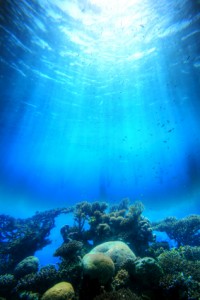Success and Serendipity

Anything could happen.
Carl von Clausewitz, the renowned German military strategist, wrote that “No campaign plan survives first contact with the enemy.” It’s good to plan, organize, and coordinate but remember that the enemy will always do something unexpected. Resilience – the ability to react to new realities and change direction as needed – is probably the single most important variable in battlefield success.
Clausewitz, of course, was focused on war planning. At the risk of being presumptuous, I’d like to paraphrase the thought: No business plan survives first contact with reality. As in warfare, it’s good to plan ahead. But don’t stick to the plan blindly. Be observant and pragmatic. As you learn more about reality, adjust the plan accordingly and do it quickly.
We all like to make predictions, of course, but reality intervenes. Odd things happen. Weird coincidences occur. As we learned a few weeks ago, we all confabulate. We make up stories to explain what happened in the past. By understanding the past, we should be able to control the future.
Unfortunately, the stories we confabulate about the past are never completely true. Too many things happen serendipitously. We may think that X caused Y but reality is much more complicated and counter-intuitive. Another German, Georg W.F. Hegel probably said it best: “History teaches us nothing except that it teaches us nothing.”
If we can’t predict the future, why bother to write a business plan at all? Because it’s useful to lay out all the variables, understand how they inter-relate, and tell a story about the future. Once you have a story, you can adjust it. You can tell how closely your thinking relates to reality and change your plans accordingly. It’s like tailoring a new set of clothes. Following a pattern will get you close to a good fit. But you’ll need several fittings – a nip here, a tuck there – to make the ensemble fit perfectly.
This approach to planning also emphasizes the importance of serendipity. My favorite definition of serendipity is “…an aptitude for making desirable discoveries by accident.” If you could predict the future accurately, you wouldn’t need serendipity – you would simply follow the plan. Since you can’t predict the future, you need to promote serendipity as part of your plan.
How do you promote serendipity? The simple answer is that you do new things. Talk to different people. Take a different route to work. Study a new language. Travel to a new country. Take a course in a new discipline. Don’t ever assume that you know what you’re doing. Remember what Louis Pasteur said, “Chance favors the prepared mind.” Never let an accident go to waste.
Innovation: Ideas That Generate Ideas
I’ve spent the past several days in the Minnesota woods at a client’s executive retreat. The client is a software company that has made a number of acquisitions over the past few years. A good portion of the discussion at the retreat focused on how to build a platform that can: 1) integrate the various acquisitions; 2) deliver a common interface; 3) simplify the support load; 4) provide a foundation for developing new functionality more quickly.
The discussion got me thinking about platforms — innovations that generate innovations. I’ve written a lot about innovation over the past year and especially the role of serendipity and mashup thinking. I’ve generally focused, however, on innovations as an end result. In other words, we adopt certain behaviors and modes of thinking and the result is an innovation. We then repeat the process and (hopefully) get another innovation. Creating the innovation essentially ends the process.
Platform thinking, on the other hand, can lead us to innovations that spawn innovations. As Steven Johnson points out, platforms abound in the natural world. Johnson builds an extended metaphor around the coral reef — a platform for unimaginably rich plant and animal life. Once the process gets started (in an otherwise barren sea), the reef builds a virtuous circle that attracts and facilitates multiple life forms. Part of the secret is collaboration. The CO2 that one animal gives off as waste becomes the building block for another animal’s home. Similarly, oxygen is a waste product for some reef denizens but the lifeblood of others.
In the human world, the Internet is probably the best recent example of a platform. The Internet creates both serendipity (we get to meet lots of people) and mashup thinking (we can easily find lots of new ideas to mash together). The Internet also takes care of a lot of the dirty work of information sharing. Just as the coral reef makes it easy for many animals to find a home, the Internet makes it easy for people like me to create websites and share information. We often hear the metaphor of researchers standing on the shoulders of giants. My website is standing on the shoulders of a very rich (and essentially free) technology stack.
Platform thinking is innovation taken to the next step. We think about how to create something that creates something. I’m generally a proponent of free markets, but Johnson makes as strong argument that the most fundamental platforms come from public agencies. Certainly, the Internet did not come from market-driven competition. Rather, it resulted from the collaboration of many specialists from many disciplines in an open environment. That’s pretty much like a coral reef.
So, what’s the next platform? I’m guessing that it’s a mashup of: 1) the human body, 2) secure communications, and 3) Internet sensors. We already have millions of Internet sensors monitoring the environment — everything from air pressure, to ocean salinity, to volcanic pressures. The next frontier could well be sensing human health conditions. We already have wearable condition monitors. For instance, friends of mine run a small company in Denver called Alcohol Monitoring. They provide a wearable device, with secure communications, that alerts probation officers when one of their wards has been drinking. Within a decade, I’d guess that health condition monitors will migrate from outside the body to inside the body. They’ll provide critical data that can help us foresee — and forestall — health crises. They’ll also provide a platform for a huge wave of new ideas, services, and fortunes. Sounds like a coral reef.
